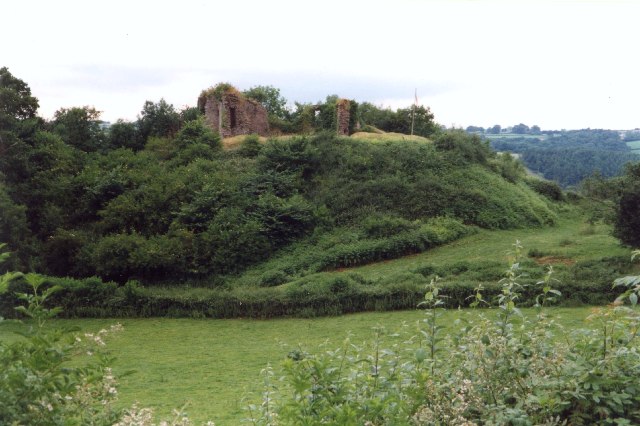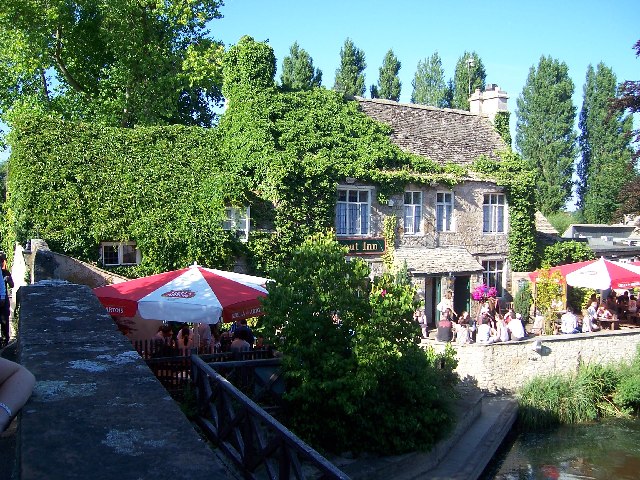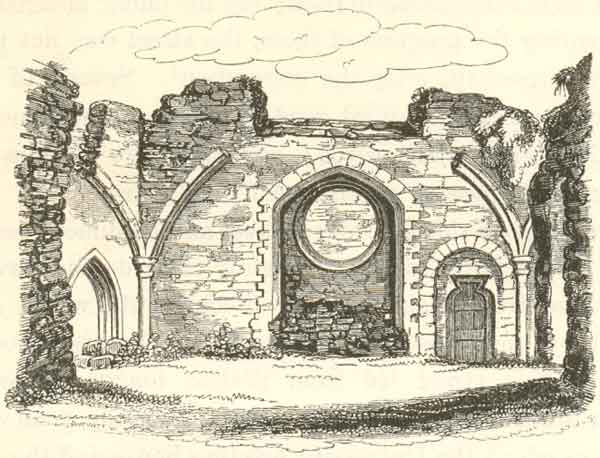|
Fair Rosamund
Rosamund Clifford (before 1150 – ), often called "The Fair Rosamund" or "Rose of the World" (Latin: ''rosa mundi''), was a medieval English noblewoman and mistress of Henry II, King of England, who became famous in English folklore. Life Early life Rosamund Clifford, born before 1150, is usually assumed to have been the daughter of Walter de Clifford (born Walter FitzRichard; 1113–1190), a Marcher Lord, and his wife Margaret. He gained his surname from his major holding, Clifford Castle in Herefordshire, where he was first steward then lord. She had three brothers, Walter (circa 1160–1221), Richard and Gilbert, and two sisters: Amice, who married Osbern FitzHugh of Richard's Castle, Herefordshire and Lucy, wife of Hugh de Say of Stokesay, Shropshire. Her name likely came from the Latin phrase ''rosa mundi'', meaning "rose of the world." Clifford was first raised at her father's Clifford Castle, then sent to a convent of Benedictine nuns in Godstow Abbey for educ ... [...More Info...] [...Related Items...] OR: [Wikipedia] [Google] [Baidu] |
William Bell Scott
William Bell Scott (1811–1890) was a Scottish artist in oils and watercolour and occasionally printmaking. He was also a poet and art teacher, and his posthumously published reminiscences give a chatty and often vivid picture of life in the circle of the Pre-Raphaelites; he was especially close to Dante Gabriel Rossetti. After growing up in Edinburgh, he moved to London, and from 1843 to 1864 was principal of the government School of Art in Newcastle upon Tyne, where he added industrial subjects to his repertoire of landscapes and history painting. He was one of the first British artists to extensively depict the processes of the Industrial Revolution. He returned to London, working for the Science and Art Department until 1885. He painted a cycle of historical subjects mixed with scenes from modern industry for Wallington Hall in Northumberland (now National Trust), his best known works, and a purely historical cycle for Penkill Castle in Ayrshire in Scotland. He did n ... [...More Info...] [...Related Items...] OR: [Wikipedia] [Google] [Baidu] |
Benedictines
, image = Medalla San Benito.PNG , caption = Design on the obverse side of the Saint Benedict Medal , abbreviation = OSB , formation = , motto = (English: 'Pray and Work') , founder = Benedict of Nursia , founding_location = Subiaco Abbey , type = Catholic religious order , headquarters = Sant'Anselmo all'Aventino , num_members = 6,802 (3,419 priests) as of 2020 , leader_title = Abbot Primate , leader_name = Gregory Polan, OSB , main_organ = Benedictine Confederation , parent_organization = Catholic Church , website = The Benedictines, officially the Order of Saint Benedict ( la, Ordo Sancti Benedicti, abbreviated as OSB), are a monastic religious order of the Catholic Church following the Rule of Saint Benedict. They are also sometimes called the Black Monks, in reference to the colour of their religious habits. They ... [...More Info...] [...Related Items...] OR: [Wikipedia] [Google] [Baidu] |
Chapter House
A chapter house or chapterhouse is a building or room that is part of a cathedral, monastery or collegiate church in which meetings are held. When attached to a cathedral, the cathedral chapter meets there. In monasteries, the whole community often met there daily for readings and to hear the abbot or senior monks talk. When attached to a collegiate church, the dean, prebendaries and canons of the college meet there. The rooms may also be used for other meetings of various sorts; in medieval times monarchs on tour in their territory would often take them over for their meetings and audiences. Synods, ecclesiastical courts and similar meetings often took place in chapter houses. Design When part of a monastery, the chapter house is generally located on the eastern wing of the cloister, which is next to the church. Since many cathedrals in England were originally monastic foundations, this is a common arrangement there also. Elsewhere it may be a separate building. The chap ... [...More Info...] [...Related Items...] OR: [Wikipedia] [Google] [Baidu] |
Christians
Christians () are people who follow or adhere to Christianity, a monotheistic Abrahamic religion based on the life and teachings of Jesus Christ. The words ''Christ'' and ''Christian'' derive from the Koine Greek title ''Christós'' (Χριστός), a translation of the Biblical Hebrew term ''mashiach'' (מָשִׁיחַ) (usually rendered as ''messiah'' in English). While there are diverse interpretations of Christianity which sometimes conflict, they are united in believing that Jesus has a unique significance. The term ''Christian'' used as an adjective is descriptive of anything associated with Christianity or Christian churches, or in a proverbial sense "all that is noble, and good, and Christ-like." It does not have a meaning of 'of Christ' or 'related or pertaining to Christ'. According to a 2011 Pew Research Center survey, there were 2.2 billion Christians around the world in 2010, up from about 600 million in 1910. Today, about 37% of all Christians live in the Am ... [...More Info...] [...Related Items...] OR: [Wikipedia] [Google] [Baidu] |
Bishop Of Lincoln
The Bishop of Lincoln is the ordinary (diocesan bishop) of the Church of England Diocese of Lincoln in the Province of Canterbury. The present diocese covers the county of Lincolnshire and the unitary authority areas of North Lincolnshire and North East Lincolnshire. The bishop's seat ('' cathedra'') is located in the Cathedral Church of the Blessed Virgin Mary in the city of Lincoln. The cathedral was originally a minster church founded around 653 and refounded as a cathedral in 1072. Until the 1530s the bishops were in full communion with the Roman Catholic Church. The historic medieval Bishop's Palace lies immediately to the south of the cathedral in Palace Yard; managed by English Heritage, it is open to visitors. A later residence (first used by Bishop Edward King in 1885) on the same site was converted from office accommodation to reopen in 2009 as a 16-bedroom conference centre and wedding venue. It is now known as Edward King House and provides offices for the bishop ... [...More Info...] [...Related Items...] OR: [Wikipedia] [Google] [Baidu] |
Hugh Of Lincoln
Hugh of Lincoln, O.Cart. ( – 16 November 1200), also known as Hugh of Avalon, was a French-born Benedictine and Carthusian monk, bishop of Lincoln in the Kingdom of England, and Catholic saint. His feast is observed by Catholics on 16 November and by Anglicans on 17 November. Life Hugh was born at the château of Avalon,British History Online Bishops of Lincoln accessed on 28 October 2007 at the border of the with , the son of Guillaume, seigneur of Avalon. His mother Anne de Theys died when he was eight and, because his father was a soldier, he went to a boa ... [...More Info...] [...Related Items...] OR: [Wikipedia] [Google] [Baidu] |
Shrine
A shrine ( la, scrinium "case or chest for books or papers"; Old French: ''escrin'' "box or case") is a sacred or holy sacred space, space dedicated to a specific deity, ancestor worship, ancestor, hero, martyr, saint, Daemon (mythology), daemon, or similar figure of respect, wherein they are veneration, venerated or worshipped. Shrines often contain Cult image, idols, relics, or other such objects associated with the figure being venerated. A shrine at which votive offerings are made is called an altar. Shrines are found in many of the world's religions, including Christianity, Islam, Hinduism, Buddhism, Chinese folk religion, Shinto, indigenous Philippine folk religions, and Germanic paganism, Asatru as well as in secular and non-religious settings such as a war memorial. Shrines can be found in various settings, such as Church (building), churches, temples, cemetery, cemeteries, Conservation of South Asian household shrines, museums, or in the home. However, portable shrine ... [...More Info...] [...Related Items...] OR: [Wikipedia] [Google] [Baidu] |
Hereford Cathedral
Hereford Cathedral is the cathedral church of the Anglican Diocese of Hereford in Hereford, England. A place of worship has existed on the site of the present building since the 8th century or earlier. The present building was begun in 1079. Substantial parts of the building date from both the Norman and the Gothic periods. The cathedral is a Grade I listed building. The cathedral has the largest library of chained book in the world, its most famous treasure being the ''Hereford Mappa Mundi, Mappa Mundi'', a medieval map of the world created around 1300 by Richard of Holdingham. The map is listed on the UNESCO Memory of the World Register. Origins The cathedral is dedicated to two saints, Mary, mother of Jesus, St Mary the Virgin and Æthelberht II of East Anglia, St Ethelbert the King. The latter was beheaded by Offa of Mercia, Offa, King of Mercia in the year 794. Offa had consented to give his daughter to Ethelbert in marriage: why he changed his mind and deprived him of ... [...More Info...] [...Related Items...] OR: [Wikipedia] [Google] [Baidu] |
Godstow Abbey Ruins - Geograph
Godstow is about northwest of the centre of Oxford. It lies on the banks of the River Thames between the villages of Wolvercote to the east and Wytham to the west. The ruins of Godstow Abbey, also known as Godstow Nunnery, are here. A bridge spans the Thames and the Trout Inn is at the foot of the bridge across the river from the abbey ruins. There is also a weir and Godstow lock. History Godstow Abbey (see detailed history below) was built here, starting in 1133. It housed an order of Benedictine nuns. Rosamund Clifford, the mistress of King Henry II, retired here and died at 30 in about 1177. Her grave is somewhere in the grounds but now lost. The abbey was suppressed in 1539 under the Second Act of Dissolution. The abbey was then converted into Godstow House by George Owen. It was occupied by his family until 1645, when the building was badly damaged in the English Civil War. After this damage, the building fell into disrepair and was used by the locals as a source of ston ... [...More Info...] [...Related Items...] OR: [Wikipedia] [Google] [Baidu] |
Woodstock Palace
Woodstock Palace was a royal residence in the English town of Woodstock, Oxfordshire. Henry I of England built a hunting lodge here and in 1129 he built of walls to create the first enclosed park, where lions and leopards were kept. The lodge became a palace under Henry's grandson, Henry II, who spent time here with his mistress, Rosamund Clifford. Timeline Important events that took place at the palace or manor include: * The marriage of William the Lion, king of Scots to Ermengarde de Beaumont in 1186 * The signing of the Treaty of Woodstock between Henry III of England and Llewelyn the Last (1247) * The birth of Edmund of Woodstock, 1st Earl of Kent (1301-1330), the sixth son of King Edward I, and the second by his second wife Margaret of France, and a younger half-brother of King Edward II. * The birth of Edward, the Black Prince (1330), eldest son and heir apparent of King Edward III and father of King Richard II. * The marriage of Mary Plantagenet, daughter of King Edwa ... [...More Info...] [...Related Items...] OR: [Wikipedia] [Google] [Baidu] |
Beaumont Palace
Beaumont Palace, built outside the north gate of Oxford, was intended by Henry I about 1130 to serve as a royal palace conveniently close to the royal hunting-lodge at Woodstock (now part of the park of Blenheim Palace). Its former presence is recorded in Beaumont Street, Oxford. Set into a pillar on the north side of the street, near Walton Street, is a stone with the inscription: "Near to this site stood the King's Houses later known as Beaumont Palace. King Richard I was born here in 1157 and King John in 1166". The "King's House" was the range of the palace that contained the king's lodgings. Henry spent Easter 1133 in the ''nova aula'' – his "new hall" at Beaumont – in great pomp, celebrating the birth of his grandson, the future Henry II. Edward I was the last king to sojourn in Beaumont officially as a palace, and in 1275 he granted it to an Italian lawyer, Francesco Accorsi, who had undertaken diplomatic missions for him. When Edward II was put to flight at the B ... [...More Info...] [...Related Items...] OR: [Wikipedia] [Google] [Baidu] |









